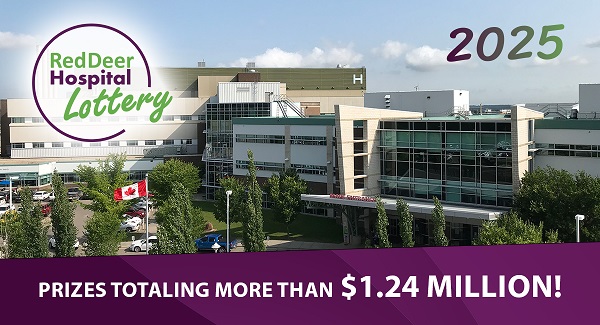Also Interesting
Three years into its existence, the Canadian Elite Basketball League includes more teams than the CFL

Accomplishments of the CEBL
It was three years ago when the CEBL first opened its doors as a six-team enterprise. Upon its first year, the league felt they could add a seventh club, in Ottawa. Then came Covid-19. It could have destroyed the new endeavour, had it not been for the commissioner and former CFL receiver Mike Morreale. In the summer of 2020, Morreale organized a two-week contest in St. Catharines, Ont., to allow CEBL to crown a champion. Thanks to the resulting boost from that championship run, in 2021, the CEBL again had a complete and steady schedule.
In 2022 the CEBL has added the Montreal Alliance, the Scarborough Shooting Stars and the Newfoundland Growlers. Just like that
The league continues to expand. After the addition of clubs in Toronto, Montreal, and St. John’s, the CEBL locations are now spread from Langley, B.C. to the east of the country. So now it can truly be called a national league. In fact, there are now 10 teams, making the CEBL the largest professional sports league in Canada. That’s more Canadian based teams than the NHL (7), the NBA (1), and MLB (1) combined! It also makes the league larger than the CFL.
The Scarborough (Toronto) Shooting Stars included a rap celebrity. J. Cole (Jermaine Cole) signed a contract with Scarborough, along with former local NBA star Jamaal Magloire as an executive. With J. Cole, there’s a trick component to signing a 37-year-old with insignificant experience consisting of three rounds last year in Rwanda. It is also uncertain how available he is going to be, as the artist has tour dates starting with June 10 — only five games into the season. But his acquisition has already attracted a lot of media attention. You can learn more about players and teams in different kinds of sports, and place bets on them online at https://bookmaker-ratings.net.za/bonuses/ , follow the link to learn about bonuses.
CEBL lost its Michael Jordan. Three years in a row Xavier Moon earned the CEBL Player of the Year prize. The American guard (Now with the LA Clippers) also directed Edmonton to the title in both of the last two seasons and accepted Finals MVP honours. He’s one of the CEBL players who leaped to the NBA during the last season as it grappled with COVID-affiliated problems. Another one is Lindell Wigginton, the Canadian Player of 2021, who has joined the Milwaukee Bucks upon exiting Hamilton. While losing such stars is sad, at the end of the day it might have a positive effect on the CEBL as it proves to players and fans the league can serve as a gateway to the NBA.
A new Moon might be rising. Since the departure of their celebrity, Edmonton may rely more on the forward Jordan Baker, winner of the 2020 Canadian Player of the Year award, who got 14.9 points and 9.4 rebounds on average last season. Kadre Gray is another powerful Canadian, previously a Laurentian U Sports star who averaged 15.3 points last year and 4.6 assists for Ottawa and is now part of the Fraser Valley Bandits. Guelph’s Cat Barber can take over the title, an American guard who averaged 17.6 points last season before getting a short break with the Atlanta Hawks.
The Elam Ending is still a thing. For years basketball geeks have been telling the NBA to embrace this inspiring way of ending matches. It removes the irritating custom of the losing team purposely fouling when the game is coming to an end. The NBA successfully tried it in 2020 at its All-Star Game, but they have not had the courage to try it in significant games. The CEBL has been doing it since 2020.
Also Interesting
Mortgage Mayhem: How Rising Interest Rates Are Squeezing Alberta Homeowners

As interest rates continue to climb, Alberta homeowners are facing a financial reckoning. With approximately 1.2 million Canadians set to renew their mortgages in 2025, many of whom secured loans during periods of historically low interest rates, a significant number are anticipating higher payments upon renewal. This financial strain is poised to impact households across the province, leading to tough financial choices and lifestyle adjustments.
The real estate market in Alberta has long been a beacon of affordability compared to cities like Toronto and Vancouver. However, with rising interest rates, even this relative advantage is beginning to erode. Homeowners who took on variable-rate mortgages or secured loans during historically low-interest periods are now feeling the squeeze. Many face mortgage payments that could increase by hundreds, if not thousands, of dollars each month.
Tough Choices: Cutting Back on Essentials and Luxuries
With nearly 60 percent of mortgage holders in the province expecting higher payments upon renewal in 2025, financial strain is set to hit households hard. According to recent reports, 35 percent of homeowners anticipate a slight increase, while 25 per cent brace for a significant hike. For many, this means tough financial choices and lifestyle adjustments.
Among those expecting a rise in mortgage payments, a significant portion anticipates financial pressure on their household. In response, Albertans are slashing discretionary spending, with many cutting back on non-essentials. Travel budgets are taking a hit, with some reducing or eliminating trips altogether. Even more concerning, others say they will have to trim spending on essentials like groceries and gas to stay afloat.
The strain extends beyond just the affected homeowners. Local businesses, especially those in retail, hospitality, and tourism, are likely to feel the ripple effects. When a significant portion of the population pulls back on spending, economic activity slows, and small businesses may struggle to stay profitable.
Financial advisors suggest that those facing increased mortgage payments should revisit their household budgets, explore refinancing options, and consult with their lenders to see if adjustments can be made.
The Alberta Economic Factor: Boom, Bust, and Mortgage Stress
Unlike other regions in Canada, Alberta’s economy remains tightly linked to the oil and gas sector, leading to greater volatility in household incomes. While wages can be high, employment remains unpredictable, making financial resilience more difficult to maintain. This economic unpredictability has always been a challenge for residents. When the oil industry booms, wages surge, employment rates rise, and homeownership becomes more accessible.
But during downturns, layoffs become common, and homeowners can find themselves struggling to keep up with payments. This cycle makes high mortgage payments especially daunting for Albertans, many of whom may not have significant emergency savings to weather financial storms.
In cases where savings run out, some homeowners may need alternative financial solutions, such as a line of credit from Fora Credit, to cover emergency expenses and avoid missing payments.
A Housing Shift: Downsizing and Relocating
For those struggling to manage higher mortgage payments, some are considering drastic moves. Downsizing or relocating to more affordable areas has become a viable option for many Albertans. Homeowners are exploring opportunities to reduce monthly carrying costs, whether by moving to smaller homes or shifting to regions with lower real estate prices.
There is also a growing interest in multi-generational living arrangements. Families are pooling resources to purchase homes together, enabling them to split mortgage costs and share living expenses. While this approach has been common in other parts of the world, it is becoming an increasingly attractive solution in Alberta as mortgage affordability diminishes.
What’s Next for Alberta’s Housing Market?
As the Bank of Canada continues to grapple with inflation, interest rates may remain elevated for the foreseeable future. This could further strain homeowners and cool Alberta’s once-hot housing market. Higher mortgage rates make it more difficult for new buyers to enter the market, leading to decreased demand and potentially stabilizing or reducing home prices in some areas.
Experts suggest that while home values may soften slightly, a full market crash is unlikely. Alberta’s relatively low housing costs compared to major metropolitan areas in Canada provide some buffer against drastic devaluations.
Still, for those facing renewal in 2025, preparation is key. Financial advisors recommend stress-testing mortgage payments, meaning homeowners should calculate potential increases and adjust their budgets accordingly.
How to Prepare for Rising Mortgage Costs
Homeowners who anticipate higher payments should take action now rather than waiting until their renewal date arrives. Some strategies to consider include:
● Refinancing: If possible, homeowners should explore refinancing options that might offer lower rates or extended amortization periods to reduce monthly payments.
● Cutting Expenses: Budget adjustments, such as reducing discretionary spending and optimizing essential costs, can help cushion the impact of higher mortgage payments.
● Increasing Income: Seeking additional income sources, whether through side gigs, renting out portions of their home, or negotiating for a salary increase, can help mitigate financial strain.
● Seeking Professional Advice: Consulting with mortgage brokers, financial advisors, and lenders can provide tailored solutions for those struggling to meet their new financial obligations.
For Albertans facing mortgage renewal in 2025, now is the time to assess financial options, seek expert advice, and prepare for a potentially rocky road ahead. While the challenge is significant, proactive planning and smart financial decisions can help homeowners navigate this difficult period and maintain stability despite rising interest rates.
Also Interesting
Exploring Wildrobin Technological Advancements in Live Dealer Games

In the rapidly evolving world of online gaming, Wildrobin casino stands out for its innovative approach to live dealer games, setting new standards in user experience and technological advancements. Wildrobin continues to refine these features for a truly immersive setting.
Live dealer games have become a cornerstone of the online casino industry, offering players an immersive experience that closely mirrors the excitement of a physical casino. This format combines the convenience of online gaming with the authenticity of real-time interaction, facilitated by professional dealers and high-definition streaming technology.
The Rise of Live Dealer Games
The evolution of live dealer games has been marked by significant technological milestones. From basic single-camera setups to sophisticated multi-angle broadcasting systems, the industry has witnessed remarkable growth.
Modern platforms now utilize advanced OCR (Optical Character Recognition) technology to instantly digitize physical card movements and game outcomes, ensuring complete transparency and real-time data transmission to players worldwide. Wildrobin fully embraces these technologies to enhance player trust.
Technological Innovations at This Casino
Wildrobin casino has been at the forefront of integrating cutting-edge technology into its live dealer offerings. By leveraging advancements in extended reality and real-time data processing, the casino enhances the gaming experience, providing players with seamless and interactive gameplay. These innovations improve visual and audio quality and ensure a more engaging and realistic environment for users. Moreover, Wildrobin pursues continuous experimentation with cutting-edge solutions to stay ahead of industry trends.
The integration of sophisticated bandwidth optimization techniques and adaptive streaming technologies ensures uninterrupted gameplay across various devices and network conditions. This technical infrastructure allows for seamless scaling of concurrent users while maintaining high-quality video streams and minimal latency, crucial factors in delivering an authentic casino experience to players regardless of their location.
Enhancing User Experience
The focus on user experience is evident in Wildrobin casino’s commitment to continuous improvement. The implementation of advanced algorithms and AI-driven analytics allows for personalized gaming experiences, catering to individual player preferences and behaviors. This approach increases player satisfaction and fosters a loyal customer base.
Advanced chat systems and interactive features create a social atmosphere where players can interact with dealers and fellow participants in real-time. The implementation of customizable user interfaces allows players to adjust their viewing angles, table statistics, and betting options according to their preferences. These personalization options, combined with intuitive navigation and seamless payment processing, contribute to a more engaging and user-friendly gaming environment.
The Future of Live Dealer Games
As technology continues to evolve, Wildrobin casino is poised to lead the way in the next generation of live dealer games. With ongoing research and development, the casino aims to integrate even more sophisticated technologies, such as virtual reality and augmented reality, to further blur the lines between virtual and physical gaming environments.
This commitment to innovation ensures that Wildrobin casino remains a key player in the online gaming industry. Wildrobin is also dedicated to implementing breakthroughs that will shape the future of immersive casino entertainment.
-

 2025 Federal Election2 days ago
2025 Federal Election2 days agoResearchers Link China’s Intelligence and Elite Influence Arms to B.C. Government, Liberal Party, and Trudeau-Appointed Senator
-

 Business2 days ago
Business2 days agoTimeline: Panama Canal Politics, Policy, and Tensions
-

 COVID-192 days ago
COVID-192 days agoFauci, top COVID officials have criminal referral requests filed against them in 7 states
-

 2025 Federal Election2 days ago
2025 Federal Election2 days agoPoilievre Announces Plan To Cut Taxes By $100,000 Per Home
-

 Health2 days ago
Health2 days agoRFK Jr. Shuts Down Measles Scare in His First Network Interview as HHS Secretary
-

 Health2 days ago
Health2 days agoRed Deer Hospital Lottery – Previous Supporter Draw Deadline!
-

 International2 days ago
International2 days agoTrump White House will ignore reporter emails that include ‘preferred pronouns’ in signature
-

 Bjorn Lomborg2 days ago
Bjorn Lomborg2 days agoThe stupidity of Net Zero | Bjorn Lomborg on how climate alarmism leads to economic crisis




